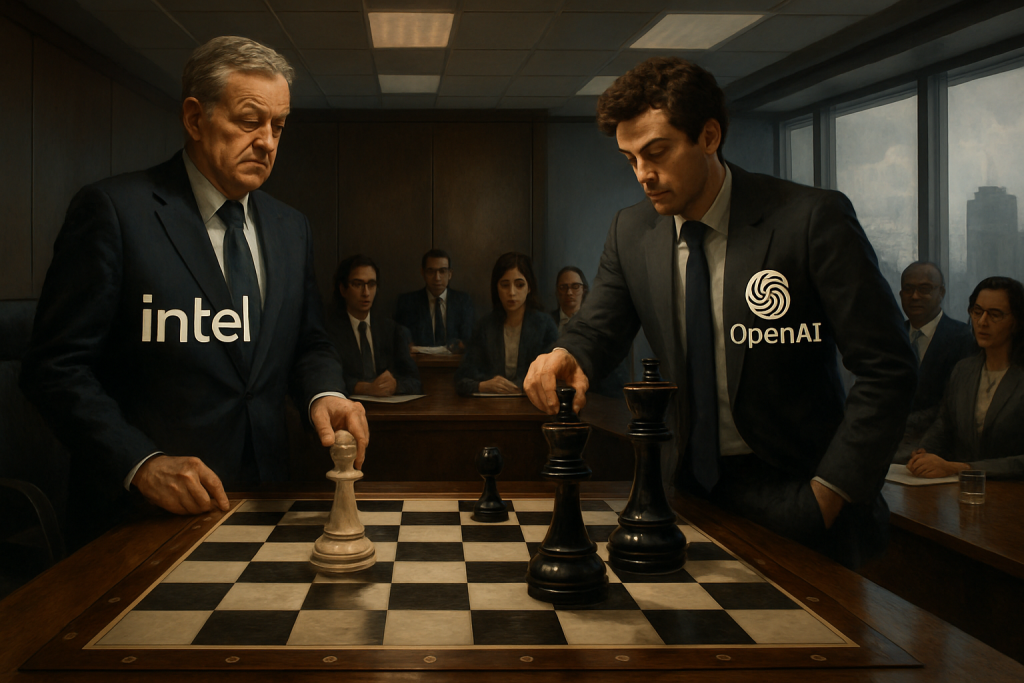The tectonic plates of the AI world shifted again yesterday, and the aftershocks are still reverberating. The news? Intel CEO Lip-Bu Tan is taking direct control of the company’s AI and advanced technologies divisions. The reason? Sachin Katti, Intel’s Chief Technology and AI Officer, has jumped ship to join OpenAI. It’s a move that speaks volumes about the current state of the AI landscape, the ambitions of OpenAI, and the challenges faced by legacy tech giants like Intel.
Think of it like this: it’s as if Spock left the Starship Enterprise to join a team of rogue scientists trying to build a real-life Holodeck. Katti, a former Stanford professor, was brought into Intel about four years ago, initially to shake things up in their networking group. He rose through the ranks, eventually leading the group under then-CEO Pat Gelsinger. Then, just last April, as part of a broader reorganization under the new CEO Tan, Katti was elevated to the role of Chief Technology and AI Officer. It seemed like Intel was finally ready to get serious about AI. But then…poof.
The official Intel statement, of course, emphasizes that AI remains a “top strategic priority.” And sure, Tan stepping in directly is meant to signal that commitment. But let’s be real: when a company’s AI chief bolts for the most hyped AI lab on the planet, it’s not exactly a vote of confidence. It’s like saying, “Yes, we still believe in space travel… even though our head astronaut just signed up to build rockets for Elon Musk.”
The backdrop to all of this is Intel’s ongoing struggle to keep pace in the AI chip race. While Nvidia, powered by TSMC’s manufacturing prowess, has been printing money with its data center AI chips, Intel has been playing catch-up. They’re not out of the game by any means, but they’re definitely feeling the heat. This leadership change only adds fuel to the fire, raising questions about Intel’s ability to execute its AI strategy.
So, where’s Katti headed? Straight to the heart of the AI beast: OpenAI. According to a statement from OpenAI President Greg Brockman, Katti will be “designing and building our compute infrastructure, which will power our artificial general intelligence research and scale its applications to benefit everyone.” Translation: Katti is going to be building the hardware backbone that will allow OpenAI to train even bigger, more powerful AI models. He is essentially tasked with building the Death Star that will blow up all other AI companies. This is a massive win for OpenAI, a clear signal of their ambition to not just lead in AI software, but also to control the underlying infrastructure.
The implications of this move are far-reaching. First, it underscores the intense competition for AI talent. The best and brightest minds are drawn to companies that are not only pushing the boundaries of AI, but also have the resources and vision to make a real impact. OpenAI, flush with cash from Microsoft and driven by a singular focus on AGI, is clearly a magnet for top talent. It’s like watching LeBron James leave Cleveland, not once, but twice, to chase championships. The talent goes where the rings are.
For Intel, Katti’s departure is a blow, no doubt. It forces CEO Tan to take a more hands-on approach, which could be a good thing if he has the technical chops and the bandwidth. However, it also raises questions about the company’s long-term AI strategy and its ability to retain top talent in a hyper-competitive market. Can Tan really steer the ship effectively while also juggling all the other responsibilities of a CEO? Only time will tell.
From a broader perspective, this move highlights the growing importance of compute infrastructure in the AI race. It’s not just about algorithms and models; it’s about having the hardware and the engineering expertise to train those models at scale. OpenAI’s investment in infrastructure, spearheaded by Katti, suggests that they understand this better than anyone. They’re not just building the AI brain; they’re building the entire AI body, from the neurons to the muscles.
And let’s not forget the ethical considerations. As OpenAI gets closer to artificial general intelligence (AGI), the stakes get higher. Who controls AGI? What are its values? How do we ensure that it benefits humanity as a whole? These are the questions that keep ethicists and policymakers up at night, and Katti’s work will play a crucial role in shaping the answers.
The financial implications are also significant. OpenAI’s continued dominance could further consolidate the AI market, potentially creating a winner-take-all scenario. This could lead to increased scrutiny from regulators and concerns about monopolies. On the other hand, if Intel can successfully pivot and become a major player in the AI chip market, it could provide much-needed competition and innovation. The AI gold rush is on, and the stakes are higher than ever.
Discover more from Just Buzz
Subscribe to get the latest posts sent to your email.


